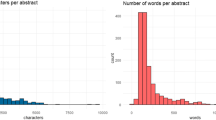Abstract
In this era of globalization, internationalization—both as an idea and an agenda—is receiving widespread attention at academic institutions across North America. Although faculty are necessarily key participants in initiatives to internationalize academia, surprisingly little work has been published that addresses the roles, responsibilities, and problems faced by the faculty on an operational level. This article has been written to provide administrators with some insight into faculty perspectives on the goals, strategies, and processes of internationalization. The authors present a case study of internationalization processes currently underway in the School of Architecture and Allied Arts at the University of Oregon. They discuss a faculty-driven approach that focused on mapping internationalization, addressing barriers to internationalization, and improving structures and systems to enhance internationalization. An in-depth critical analysis of the case leads to recommendations and a framework for navigating diverse tensions and responsibilities implicit in an internationalization imperative.



Similar content being viewed by others
Notes
Our survey of 90 tenure-related faculty members had a response rate of 55%. Of the responses, we found that 82% of faculty have significant international activity in research, teaching, or involvement in study abroad programs. The School of Architecture and Allied Arts has 16 distinct study abroad programs in which faculty and students are involved; roughly 8–10% of A&AA students participate in these programs annually.
If the faculty member receives external grant funding to support research during a research leave that is not a sabbatical, a university-level policy exists that limits the amount of faculty salary payment to the designated annual base salary level. As a result, a significant financial disincentive exists for faculty who wish to participate in professional activities abroad. Many additional expenses are incurred while living and traveling overseas for an extended period of time, while often one must continue to maintain basic living expenses at the domestic residence.
References
Altbach, P. G., & Knight, J. (2007). The internationalization of higher education: Motivations and realities. Journal of Studies in International Education, 11(3/4), 290–305. doi:10.1177/1028315307303542.
De Wit, H. (2002). Internationalization of higher education in the United States of America and Europe: A historical, comparative, and conceptual analysis. Westport, CT: Greenwood Press.
Hunter, B., White, G. P., & Godbey, G. C. (2006). What does it mean to be globally competent? Journal of Studies in International Education, 10(3), 267–285. doi:10.1177/1028315306286930.
Jones, E., & Brown, S. (2007). Contextualising international higher education. In E. Jones & S. Brown (Eds.), Internationalising higher education (pp. 194–200). London: Routledge.
Kehm, B. M., & Teichler, U. (2007). Research on internationalization in higher education. Journal of Studies in International Education, 11(3/4), 260–273. doi:10.1177/1028315307303534.
Knight, J. (2004). Internationalization remodeled: Definition, approaches, and rationales. Journal of Studies in International Education, 8(1), 5–31. doi:10.1177/1028315303260832.
Leask, B. (2001). Bridging the gap: Internationalizing university curricula. Journal of Studies in International Education, 5(2), 100–115. doi:10.1177/102831530152002.
Olson, C. L., Green, M. F., & Hill, B. A. (2006). A handbook for advancing comprehensive internationalization: What institutions can do and what students should learn. Washington, DC: American Council on Education.
Saiya, L., & Hayward, F. M. (2003). Mapping internationalization on U.S. campuses. Washington, DC: American Council on Education.
Teichler, U. (2004). The changing debate on internationalization of higher education. Higher Education, 48, 5–26. doi:10.1023/B:HIGH.0000033771.69078.41.
Acknowledgments
The authors wish to gratefully acknowledge the valuable comments and input provided to the A&AA International Initiatives Committee by Chunsheng Zhang, Frances Bronet, and Doug Blandy, as well as by our committee members: Jamie Harper, Ron Lovinger, Kevin Yates, and Jenny Young.
Author information
Authors and Affiliations
Corresponding author
Rights and permissions
About this article
Cite this article
Dewey, P., Duff, S. Reason before passion: faculty views on internationalization in higher education. High Educ 58, 491–504 (2009). https://doi.org/10.1007/s10734-009-9207-z
Received:
Accepted:
Published:
Issue Date:
DOI: https://doi.org/10.1007/s10734-009-9207-z




